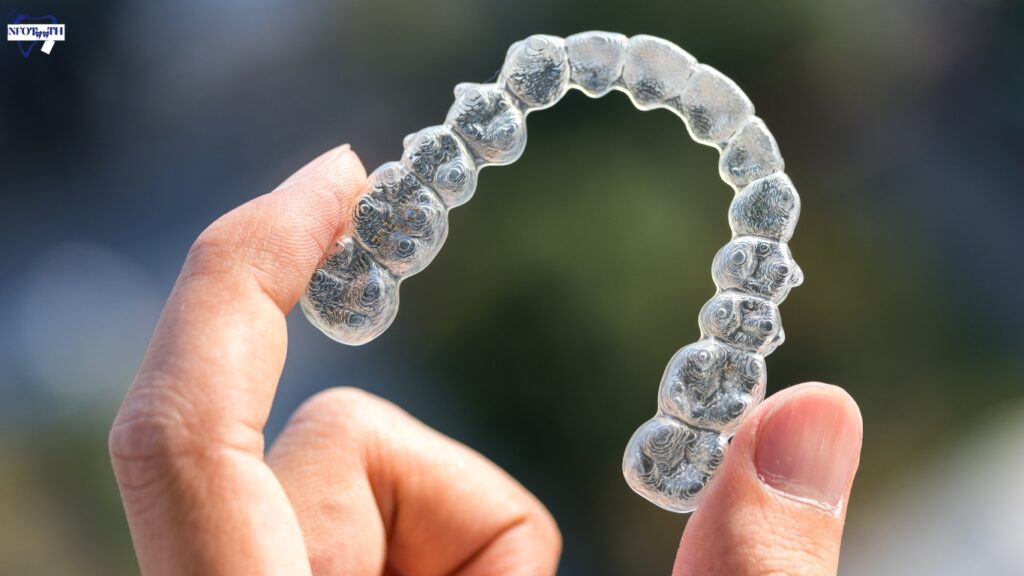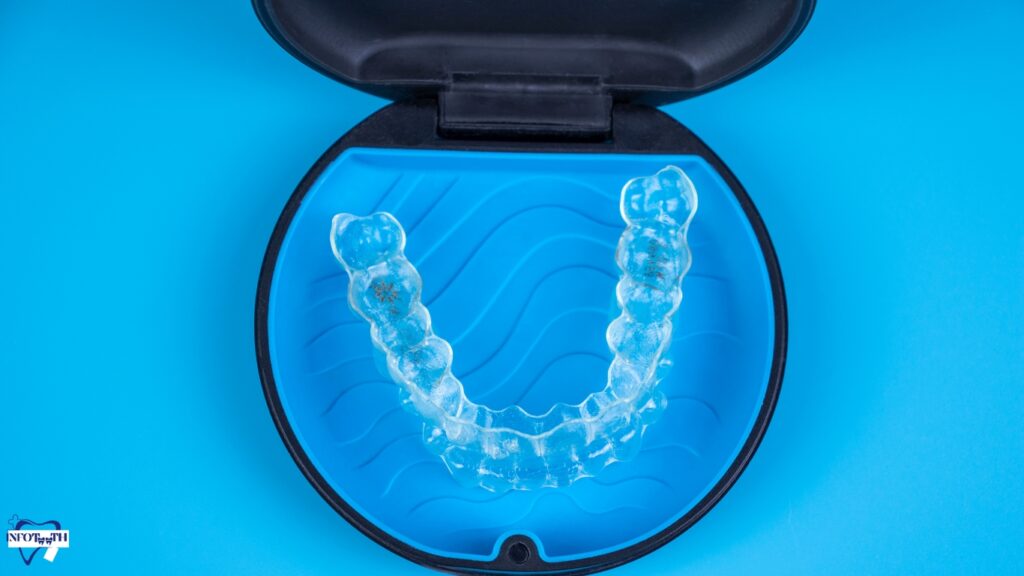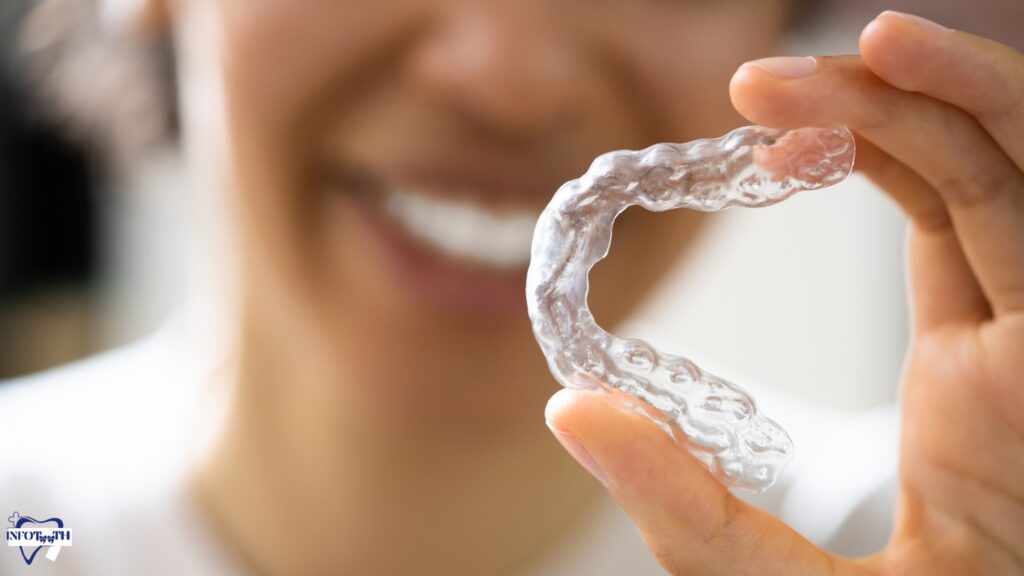By providing a discrete and comfortable alternative for traditional braces, clear aligners have completely transformed orthodontic therapy. Different types of clear aligners have arisen, each with special characteristics and advantages, in response to the growing need for a more aesthetically pleasing method of straightening teeth. Because of their almost invisible appearance.
Table of Contents
Types of clear aligners are a popular choice for people looking for a discrete orthodontic solution.
What are the Different Types of Clear Aligners?
Types of clear aligners, a discrete and comfortable alternative for traditional braces, have completely changed the orthodontics industry. Clear aligners come in a variety of forms, each with its special qualities and advantages. Let’s examine the many kinds of transparent aligners:
Invisalign:
Invisalign is a leading among types of clear aligners. The almost invisible, individualized teeth-straightening method of Invisalign sets it apart. With these detachable aligners, users can maintain good oral hygiene and engage in regular eating routines. With their reputation for accuracy and style, Invisalign aligners have grown in popularity as a discreet and efficient treatment for mild to moderate orthodontic issues.

ClearCorrect:
It is the one of the most popular options for types of clear aligners. ClearCorrect provides a comfortable and accurate way to straighten teeth. ClearCorrect uses a sequence of personalized aligners to fix misalignments progressively. When looking for an almost invisible orthodontic solution, ClearCorrect aligners are a popular choice because of their precision and efficacy.
SmileDirectClub:
By providing cutting-edge types of clear aligners, SmileDirectClub is transforming orthodontic treatment. Their selection offers versatility for a variety of lifestyles, encompassing both nighttime-only and conventional aligners. These discreet and practical aligners gradually straighten teeth using state-of-the-art technology, providing an alternative to traditional braces. SmileDirectClub focuses on cost and customization to enable people to attain a confident smile.
Candid Co.:
Candid Co. provides a selection of clear aligners designed to meet a variety of orthodontic requirements. Their cutting-edge products, including the CandidClear aligners, use cutting-edge technology to correct teeth covertly. The business puts the convenience of its customers first and offers remote monitoring via its app. Candid Co. is a significant player in the changing clear aligner market due to its dedication to efficacy and transparency, which guarantees that consumers’ orthodontic journeys are successful and customized.
How Clear Aligners Works?
Types of clear aligners have a construction similar to trays. As an almost unnoticeable substitute for traditional braces, these clear trays are made to realign teeth progressively. To create a series of aligners, the procedure starts with a 3D scan or impression of the patient’s teeth. Each series aligner applies a mild, controlled push to a particular tooth, symbolizing a phase in the treatment procedure. Patients’ teeth progressively move into the appropriate alignment as they go through the series.

Because types of clear aligners are removable, eating without restriction and easy oral hygiene maintenance are made possible. Ensuring that the therapy proceeds according to plan requires periodic check-ins with a dentist or via remote monitoring. This novel approach reduces discomfort related to standard braces while also improving looks. Clear aligners have grown in popularity as a covert and practical solution for people who want a healthier, straighter smile.
What are the Benefits of Clear Aligners?
Removability:
Types of clear aligners have the advantage of being easily removable, which increases daily flexibility. Unlike fixed braces, clear aligners may be taken out for eating, brushing, and special events.
Comfortable:
Because types of clear aligners don’t have jagged wires or brackets to irritate and discomfort people, they are usually more pleasant than braces.
Better Oral Hygiene:
Removing aligners makes it simpler to maintain good oral hygiene, which lowers the risk of gum disease and cavities that are often connected to traditional braces.
Decreased Soreness:
During the adjustment period, clear aligners usually cause less soreness and discomfort than traditional braces.

Customized for Individuals:
Every set of clear aligners is tailored to the patient’s specific dental structure, maximizing the therapeutic outcome.
Enhanced Confidence:
When teeth progressively straighten, people frequently report feeling more confident with their looks and with their self-worth, which benefits their mental health in general.
What are Braceless Teeth Aligners?
As a discrete and practical replacement for traditional braces, braceless teeth aligners are a ground-breaking development in orthodontic care. Without the need for obvious brackets or wires, these aligners—which are typically clear and custom-made—gradually move teeth into the ideal positions. Because braceless aligners are almost undetectable, people can receive orthodontic treatment without worrying about their appearance, as with metal braces. This is why people find them appealing.
Patients value how removable aligners are comfortable and convenient, allowing them to practice good oral hygiene and eat anything they want without worrying about breaking any rules. Braceless aligners continue to benefit from advancements in 3D printing, artificial intelligence, and scanning as technology develops, guaranteeing accurate and customized treatment regimens.
What are Clear Correct Aligners?
Modern orthodontic technology, in the form of ClearCorrect aligners, provides a covert and practical replacement for traditional braces. With the help of these clear, custom-fit aligners, teeth may be progressively moved into the proper positions, making orthodontic treatment more comfortable and aesthetically pleasing. Using 3D printing technology, ClearCorrect makes exact aligners that are customized to fit each patient’s teeth precisely.

One of ClearCorrect’s distinguishing qualities of types of clear aligners, which makes the aligners almost undetectable and desirable to people looking for a mild orthodontic treatment. Compared to fixed braces, the removable nature of ClearCorrect aligners provides more flexibility for everyday activities like eating and dental hygiene.
ClearCorrect aligners, which prioritize accuracy, comfort, and aesthetics, are becoming more and more popular as a reliable and patient-friendly method of straightening teeth. ClearCorrect aligners are anticipated to include additional advancements as technology develops, strengthening their position in contemporary orthodontic treatment.
Can I Get Aligners with Missing Teeth?
Most people who still have most of their natural teeth can use clear aligners. Since types of clear aligners depend on a whole set of teeth for correct alignment, missing teeth may affect how successful they are. To ascertain whether using aligners is feasible in situations where teeth are missing, a visit with an orthodontist is vital. Alternatives like bridges, implants, or other dental procedures may be suggested to close the gaps before receiving orthodontic treatment, depending on the particulars.
To make sure the selected treatment fits the overall aims of oral health and yields the greatest results for a straight and functional smile, a comprehensive evaluation is essential. Speaking with a dentist will make it easier to create a treatment plan that takes into account any worries regarding missing teeth in addition to any orthodontic requirements.
Invisalign vs Clear Aligners
Although Invisalign and transparent aligners are frequently used synonymously, there are some significant differences between the two. One particular brand of clear aligners, Invisalign, is credited with starting the industry for clear orthodontic treatments. On the other hand, the term “clear aligners” refers to a wider variety of transparent orthodontic appliances made by various manufacturers. With its trademarked SmartTrack material and exclusive technology, Invisalign distinguishes itself by providing exact control and predictability over tooth movement.

While other brands of clear aligners might employ comparable technologies, their materials or methods of treatment might differ. While Invisalign and generic clear aligners have similar advantages, including comfort, removability, and attractive appearance, Invisalign is more widely used because of its well-known brand and intensive research and development. Personal preferences, the necessity of the treatment, and financial considerations frequently play a role in the decision between them. Invisalign is a well-known product in the larger clear aligner market.
What is the Future of Clear Aligners?
Types of clear aligners have a bright future as material science and technological developments continue to change the orthodontic field. A common substitute for traditional braces, clear aligners are well-liked for their ease of use and visual appeal. We see a number of significant trends influencing the future of clear aligners.
First, treatment planning is about to undergo a revolution thanks to improved precision made possible by 3D scanning and artificial intelligence. AI algorithms are capable of analyzing sizable datasets, which enables orthodontists to create highly customized treatment plans that improve overall efficacy. Furthermore, 3D printing technologies will probably be crucial since they will make it possible to create aligners faster and with greater accuracy than ever before.

Moreover, ongoing material innovation will result in aligners that are more resilient and comfortable. Tooth-colored, biocompatible polymers could proliferate, improving patient comfort and reducing visibility. By incorporating smart technology, such as sensors or microchips, aligners can also track the progress of treatment and give patients and orthodontists immediate feedback.
Conclusion
In conclusion, the world of clear aligners provides a revolutionary and user-friendly method of receiving orthodontic treatment. Beyond only being aesthetically pleasing, transparent aligners also offer comfort, convenience, and successful outcomes. Starting your clear aligner journey is a step in the direction of a dazzling, self-assured grin. The future of clear aligners seems even more promising for people looking for a discrete and effective orthodontic option as technology develops.
FAQs
Q: How long does a clear aligner treatment typically take?
A: The length of clear aligner therapy varies but usually spans several months to a few years, contingent on the complexity of the patient’s orthodontic problems and compliance with recommended protocols.
Q: I have transparent aligners on; can I still eat and drink?
A: No, in order to avoid damage and maintain the best possible oral hygiene during orthodontic treatment, it is recommended that clear aligners be taken out before eating or drinking anything other than water.
Q: Are braces that are clear and painful?
A: In general, clear aligners cause less pain than traditional braces. While some discomfort during the alignment procedure is normal and transient, it can happen at first as teeth adjust.
Q: Can serious alignment problems be fixed with clear aligners?
A: If you have mild-to-moderate alignment difficulties, clear aligners work well. Since traditional braces provide more control over intricate tooth movements, they may be necessary in severe situations to provide total correction.
Q: How frequently ought I to use my clear aligners?
A: For best results, clear aligners should be worn for a minimum of 22 hours per day. Following the wearing directions is essential to the treatment’s effectiveness.

